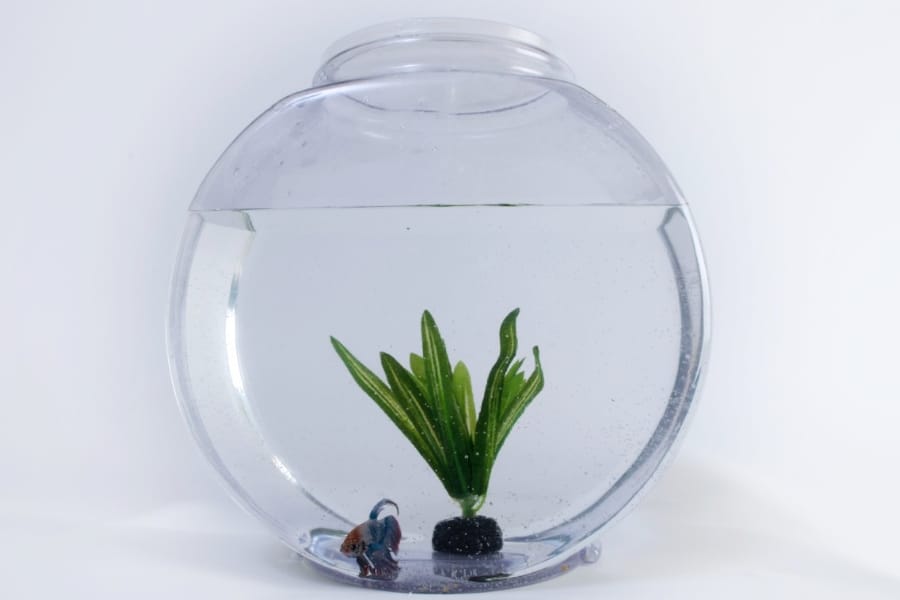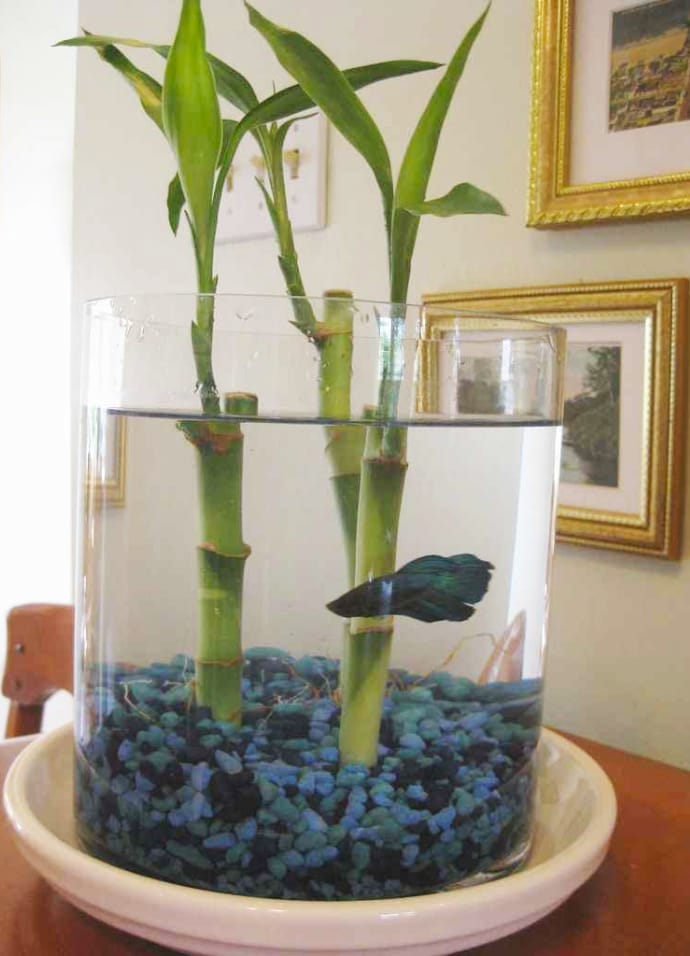Betta or Siamese Fighting fish has become one of the most popular ornamental fish kept and cultivated by breeders in recent times.
The flashy colors, iridescent scales, and beautiful-long fins that flow around it like an underwater ball gown are the fish’s hallmarks. Also, its aggressive attitude is something unique to be kept at home.
Caring Bettas are easier than many other types of fish. They are stronger, require less space, and can survive in water with lower oxygen content.
Even so, if you are interested in the health and well-being of your betta fish, you may follow the advice that placing betta fish in vase is not recommended under some circumstances.
Bettas need a house with at least 12-16 liters of space in a tank. The filtration and heater are also rarely provided in a Betta vase. Remember, they are tropical fish that need to be always kept above 23.5℃.
These are unideal environments that can make them die due to poor conditions. However, some people do have long-term success with Bettas vase. Find out how to set up if you want one!
Set Up a Betta Vase

If you decide to put betta fish in vase, ensure you do proper maintenance and care. They need filtration, proper temperature, vase cleaning, regular feeding, and enrichment like plants.
1. Select your vase or bowl and location
To keep your Betta happy and healthy, consider using a large glass flower vase so it has sufficient space that it can call its territory. The vase location is paramount, and you may want it to impact your Betta’s longevity.
Place it away from noise because it can cause fin rot and stress. Make sure to avoid excessive natural light as well, as it may promote algae growth.
Other than that, you will want to include gravel and a plant to put in the vase. As Bettas are jumpers, you must place a tray above the surface to keep Betta from jumping out.
2. Select your plant
You need to find out what kind of plant for betta fish vase. Make sure you pick the right plants that are safe and work well with them. Chinese evergreen and Java ferns are two underwater plants they like.
If you decide to use fake plants, pick one that doesn’t have any sharp edges. Moreover, if you want to set up a betta fish vase with a top method plant, Philodendrons and Peace lilies are the best choices.
3. Get everything ready
Now when you have everything prepared, it’s time to set up your Betta vase!
- Clean the vase or your bowl using hot water. Please do not use any cleansers or soap as they are harmful to fish.
- Remove the plant from its pot, wash the roots and clean thoroughly.
- Arrange the gravel on the bottom of the vase, then fill ⅔ of the vase with clean fresh water. To remove iron or chemical in the water, you may need a small amount of water conditioner for aquariums.
- Add your Betta. Let it acclimate to the water in the vase. Then place the plant roots. It would be best if you were sure that there is still plenty of room for your Betta to swim around.
Do not let the tank drop below 20℃ (68℉). It will be fine if you place them in a room that has these ranges of regular temperature. Otherwise, you will need to use a small heater.
How to Care for a Betta Fish in a Vase

The combination of a Peace lily and the splashy fish is a beautiful setup but is neither a natural nor healthy environment for your Betta. It would be best if you had proper treatment to have long-term success with Bettas vase.
- Feed them regularly, 5 to 6 times a week. Bettas’ best types of food are brine shrimp, worms, fruit flies, or specific Bettas pellets. You should have a regular schedule to avoid overfeeding. Also, there is an allowance of 1 to 2 days a week to let Betta be on fasting days.
- Change the water frequently, especially when you decide not to use a filter.
- Clean your vase. You can do it during every water change. Only use a paper towel or clean cloth to wipe down the entire inside of the vase.
- Is your Betta unhappy? It would be best if you observed its behavior. One of the signs of unhappy betta fish is changes to the fins, color, or behavior.
Having betta fish in vase also means that you have to deal with algae. You may, unexpectedly, find the water becomes cloudy or in fluctuates temperatures.
It’s important to place your Betta vase in a proper place that doesn’t have excess direct sunlight. Also, your room or the heater in the appropriate range, between 24-26℃ (76-80℉).



